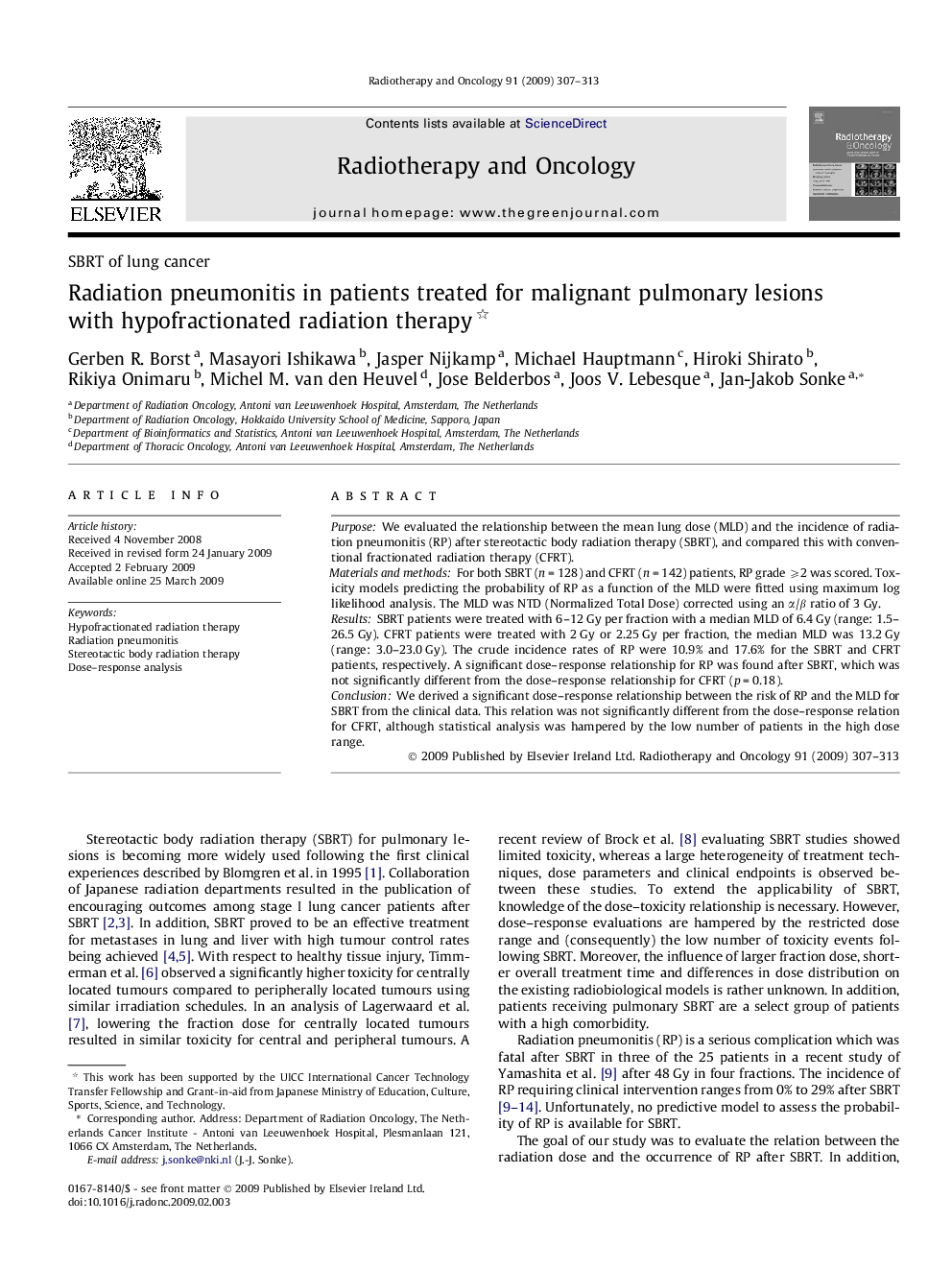| Article ID | Journal | Published Year | Pages | File Type |
|---|---|---|---|---|
| 2159110 | Radiotherapy and Oncology | 2009 | 7 Pages |
PurposeWe evaluated the relationship between the mean lung dose (MLD) and the incidence of radiation pneumonitis (RP) after stereotactic body radiation therapy (SBRT), and compared this with conventional fractionated radiation therapy (CFRT).Materials and methodsFor both SBRT (n = 128) and CFRT (n = 142) patients, RP grade ⩾2 was scored. Toxicity models predicting the probability of RP as a function of the MLD were fitted using maximum log likelihood analysis. The MLD was NTD (Normalized Total Dose) corrected using an α/β ratio of 3 Gy.ResultsSBRT patients were treated with 6–12 Gy per fraction with a median MLD of 6.4 Gy (range: 1.5–26.5 Gy). CFRT patients were treated with 2 Gy or 2.25 Gy per fraction, the median MLD was 13.2 Gy (range: 3.0–23.0 Gy). The crude incidence rates of RP were 10.9% and 17.6% for the SBRT and CFRT patients, respectively. A significant dose–response relationship for RP was found after SBRT, which was not significantly different from the dose–response relationship for CFRT (p = 0.18).ConclusionWe derived a significant dose–response relationship between the risk of RP and the MLD for SBRT from the clinical data. This relation was not significantly different from the dose–response relation for CFRT, although statistical analysis was hampered by the low number of patients in the high dose range.
